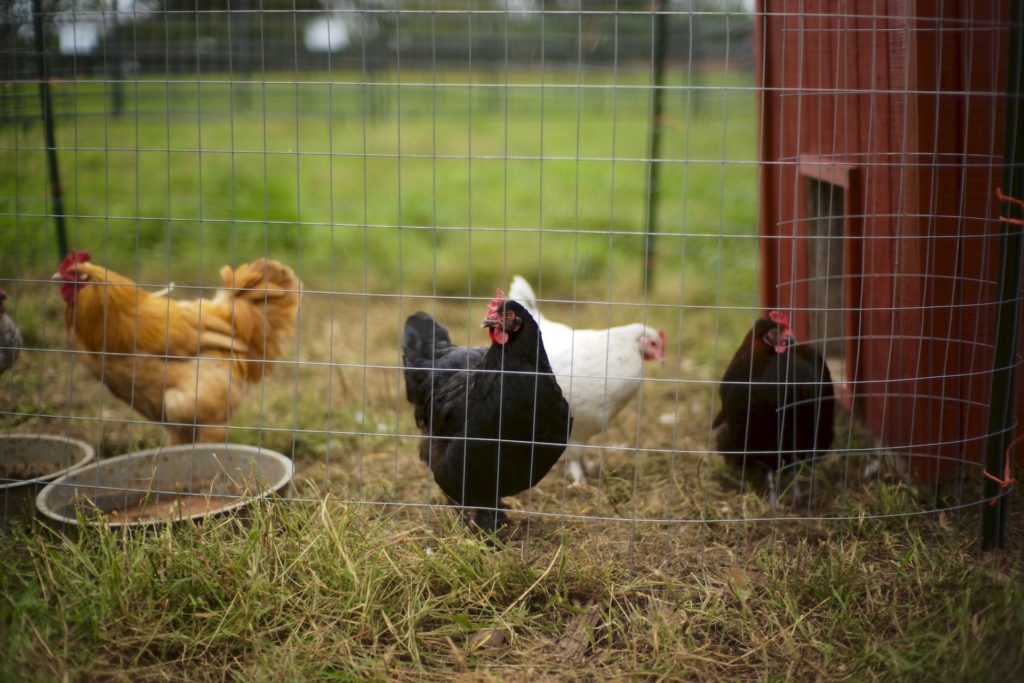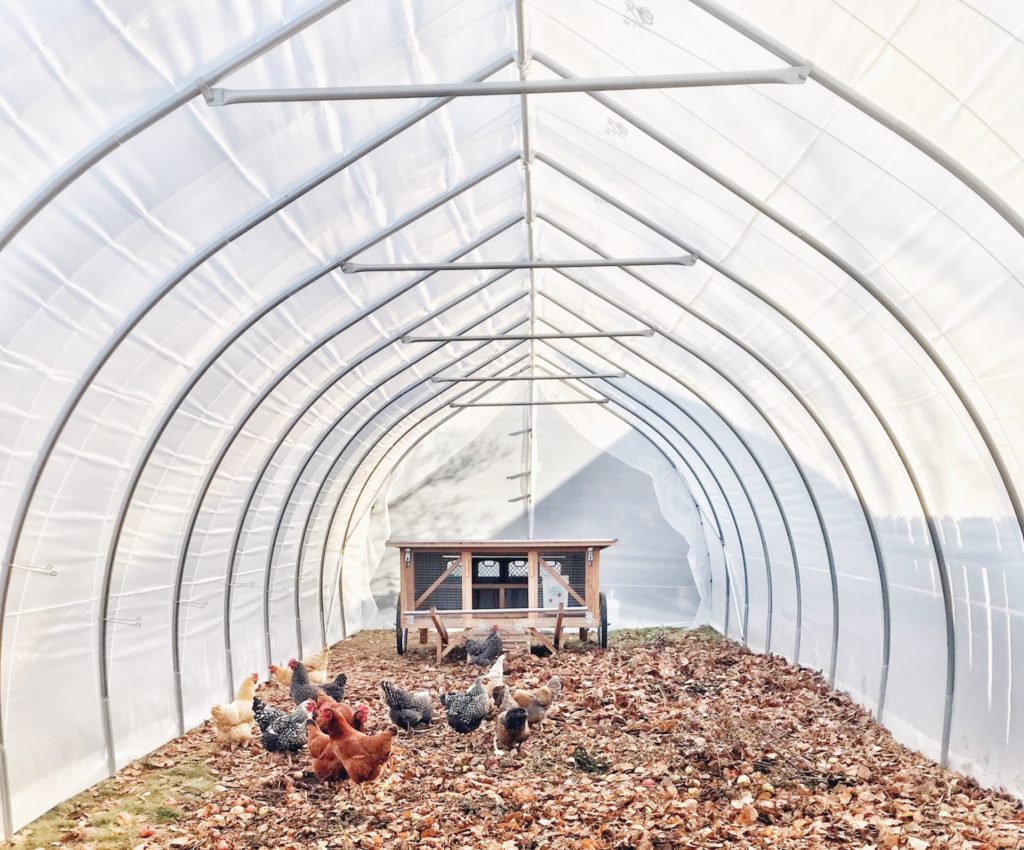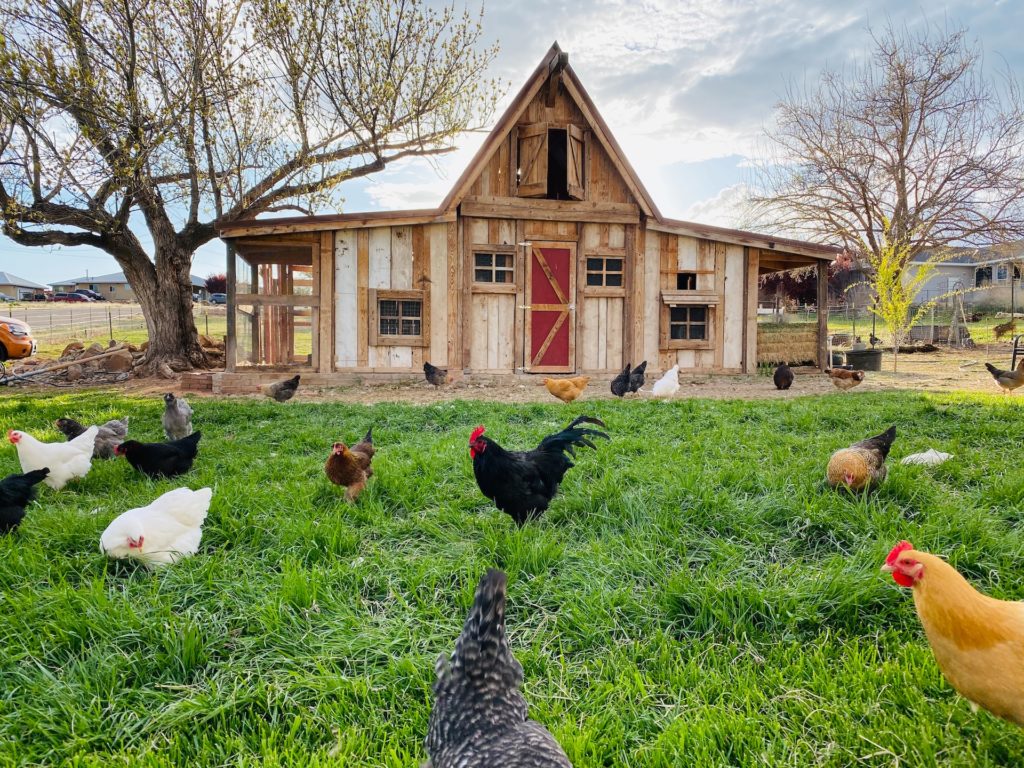It’s important to know what a chicken coop is and what purpose it serves. So, a chicken coop is an enclosed space where the chickens are kept.
A coop serves various purposes such as keeping the chickens warm during the winter and cool during the summer. It also keeps the chickens safe from predators.
Requirements to build a chicken coop.
To properly insulate a chicken coop it’s important to have a good fully functioning chicken coop. There are cases where the insulation is done perfectly but the coop is not built right, resulting in less production of eggs or even chicken death. Some of the key facts that have to be taken into consideration while setting up a chicken coop are listed below.
1. Location of the Coop.
The location of the coop plays a very vital role in maintaining the hygiene, protection against predators and providing proper shelter. Build the chicken coop on higher ground to avoid mud problems, stagnant water and moisture buildup which increases the chance of infecting the chickens. If you can not find higher ground to build the coop, you must elevate the coop to keep the chickens dry.
2. Size of the Coop
It’s important to plan the size of the coop depending on the number of chickens you breed. An adequate space per chicken in a coop is about 3-4 square feet. It’s also necessary to keep in mind that overcrowding is never a feasible option because it leads to problems like lack of hygiene, bacteria buildup, increasing the chances of parasites or insects entering the coop, inadequate supply of food and water making the chickens fall sick.
3. Building Materials
There are plenty of options to choose from when it comes to the materials used to build the coop, but the most durable option is also the cheapest one and that is Plywood. A plain unfinished plywood is the best and durable building material for a coop.
Although wood in general can rot and is the home for mites, this issue can simply be solve by installing a layer of Linoleum flooring which not only increases the durability but also is environment friendly.
4. Predator Protection
Predator protection is one of the crucial steps in building a sustainable chicken coop. One of the biggest threats to a chicken coop are predators like raccoons, coyotes, cats, dogs, and even a few snakes. To make sure the chickens are safe from such predators the best measure that can be taken is to elevate the coop by a minimum of 10-15 inches from the ground just enough to let the chickens walk beneath.
Elevating the coop can also help in the wood rotting problem. A tip for wood rotting problems, it is to set the coop on concrete which would prevent the wood from direct ground contact.
5. Secure doors and latches.
The doors need not be fancy, a basic simple piece of plywood on a frame serves the purpose. It’s important that the door is big enough for a person to get in and out easily because you’ll be collecting the eggs . The door has to have 2 openings, one for the chickens and one for people.
Also keep in mind that the door must open away from the coop that is outwards, cause if opened inwards chances of harming the chickens are high. The doors and latches should be secured with locks because some predators like to take the easy way around and just break through the doors of the coop.
6. Essential Interiors
Install the required amount of nesting boxes, roosting bars, good ventilation for proper air circulation and conditioning, and also install proper electricity supply and make sure no wires are hanging.
The nesting boxes should be 1 square foot per box and a maximum of 3 chickens per nesting box. The size of the nesting box should be increased for bigger chicken breeds. Place the nesting boxes and roosting bars on either side of the coop to avoid them pecking on one another.
Also Read: 5 Electrical Home Safety Tips for Homeowners
How to Insulate a Chicken Coop
Even with a well built chicken coop that is located on higher grounds, has predator protection measures taken, good ventilation and secured doors and latches, insulating the coop is very important especially during the winters.
Chickens are easy birds when it comes to breeding as they adapt well to a wide range of temperatures. With the right resources to help keep themselves warm, the chickens will have no trouble laying eggs even during the winters. Here is a guide to help you insulate a chicken coop.
1. Cover wire screens in the coop.
During summers and moderately warmer seasons, the ventilation in the coop helps keep the temperature cool and healthy for the chicken. However, during winters and moderately cooler seasons the same ventilation drops the temperature to a degree that is not healthy for chickens to breed or lay eggs.
To ensure the temperature stays moderately warm, it’s important to cover the wire screens i.e the windows, fully or partially depending on the cold winds.
To cover the wire screens we can use rigid foam sheets. Remember to leave a small passage or a hole for ventilation if you’re fully covering the screens.
Also Read: 5 Causes of Poor Indoor Air Quality
2. Insulate the walls, roof, & floor.
It’s equally important to insulate the walls, roof, & the floor just like the wire screens. The easiest way to insulate the inside of the coop is by adding another layer of plywood. It’s also not necessary that it has to be a brand new one, you can reuse or recycle any plywood that you have in hand. Another material that will also work is styrofoam packing. Since coop’s are built on higher ground, insulating must be done from under as well.
3. Deep Litter Bedding
While it is not exactly an insulation material, it does serve the purpose of insulating the coop during winters. It’s the process where chicken’s compost is used to raise the temperature inside the coop.
To achieve the best insulation results you will have to start the practice from the end of summer. You start by not scooping and removing the used chicken bedding but wait till the coop develops an odor and needs cleaning. Add new wood shavings on the existing bed equally for about 1-3 inches. Repeat this process till needed without removing the underlying layer. The last layer starts to produce heat gradually due decomposing of the manure.
As far as the top most layers of bedding remains fresh and thick, the odor or air quality in the coop is not affected. During the start of spring, you take out the composted manure and start again for the next cycle.
4. Coop Roosts for cold winds.
Chicken feathers are naturally insulative, they can normally keep themselves warm, but their feet are vulnerable. Most of the coop have narrow logs that do not help the chickens keep themselves warm. Installing wide branches will allow their feathers to cover their whole legs including toes.
5. Add adequate lights during winter
As the days are short during the winters the chickens stop laying eggs. This happens not due to the cold or change in the weather but because of shortage in daylight. Artificial lighting is a very effective way to make the chicken lay eggs during the winter season. Although the amount of eggs collected during winter are less than that collected in summer and spring, the lights still helps chicken’s bodies experience daylight for 12-14 hours a day which intern help them lay eggs all winter long.
Conclusion
It’s important to be mindful about the fact that chicken coop insulation is not a one-size-fit solution to all your concerns, it solely depends on your specific needs, breads and location. Proper insulation will help regulate temperature and humidity inside the coop, which will create a comfortable and healthy environment for your chickens.




